Flea Beetle Control (with Tips for Saving Damaged Plants)
This post may contain affiliate links. Read my full disclosure here.
If you walk out into your garden and find plant leaves filled with tiny holes, you may have flea beetles. We’ll share how to identify flea beetles and the damage they do, plus cheap and easy flea beetle control options.

What are Flea Beetles?
Flea beetles are nasty little bugs that hop and are about the size of fleas. They are tiny – around 1/16 to 1/8 inch long – so you may see the damage before you see the bugs. Colors include black, bronze, bluish or brown to metallic gray. Some species have stripes.
In our garden, radish leaves are their favorite target, but there are many species of flea beetles, such as:
- Crucifer flea beetle (Phyllotreta cruciferae)
- Striped flea beetle (P. striolata)
- Western black flea beetle (P. pusilla)
- Potato flea beetle (Epitrix cucumeris)
- Spinach flea beetle (Disonycha xanthomelas)
Flea beetles (Tribe Alticini) are not related to fleas. All flea beetles jump, and can jump up to a foot (about 30cm). These garden pests will eat most garden vegetables including tomatoes, potatoes, peppers, and other plants.

Life Cycle
Adults pose the biggest threat early in the planting season. Young plants are most susceptible to beetle damage.
When outdoor temperatures reach 50ºF (10°C), the adults are active and lay eggs in the soil, roots, and sometimes on leaves or flowers. The eggs will hatch in 7-14 days.
The flea beetle larvae feed on the roots of plants (near the ground) until fully grown and ready to pupate. Then they dig into the ground and pupate. The adults emerge after about 12 days.
Depending on temperature, there could be more than one generation of flea beetles per growing season. Farther south, it’s more likely there will be more than one generation.
The adult flea beetles like warm, calm, sunny days, and will be less active on cool days. Adult flea beetles will survive the winter (overwinter) in the soil, or in brush or wooded areas.
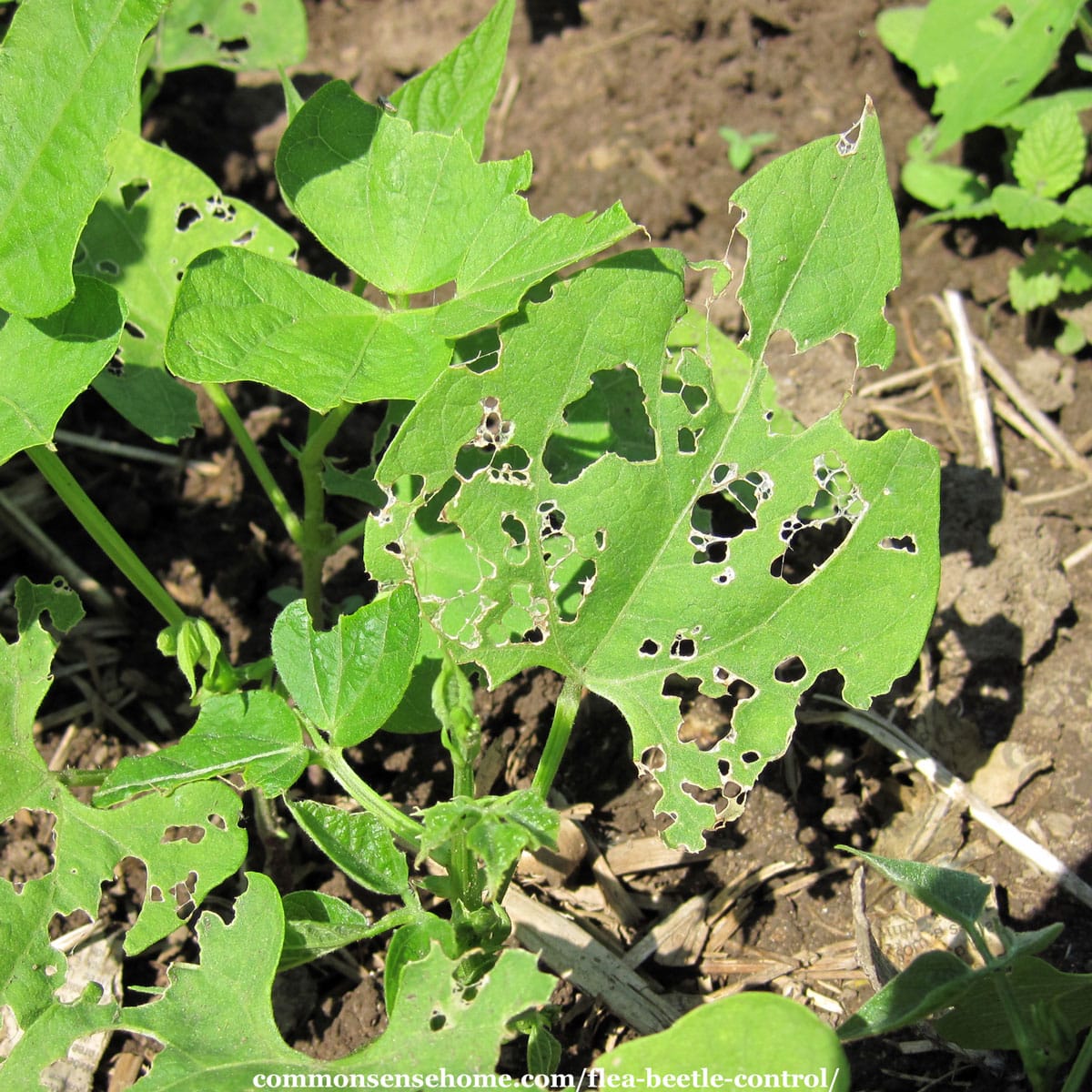
Flea Beetle Damage – What to Look For
Adult flea beetles feed on foliage (leaves). They start by chewing so many holes in the leaves that it looks like the plant has been hit by buckshot.
As they continue feeding, they can completely defoliate a plant, eating all the leaves. Young, tender seedlings are the most vulnerable.
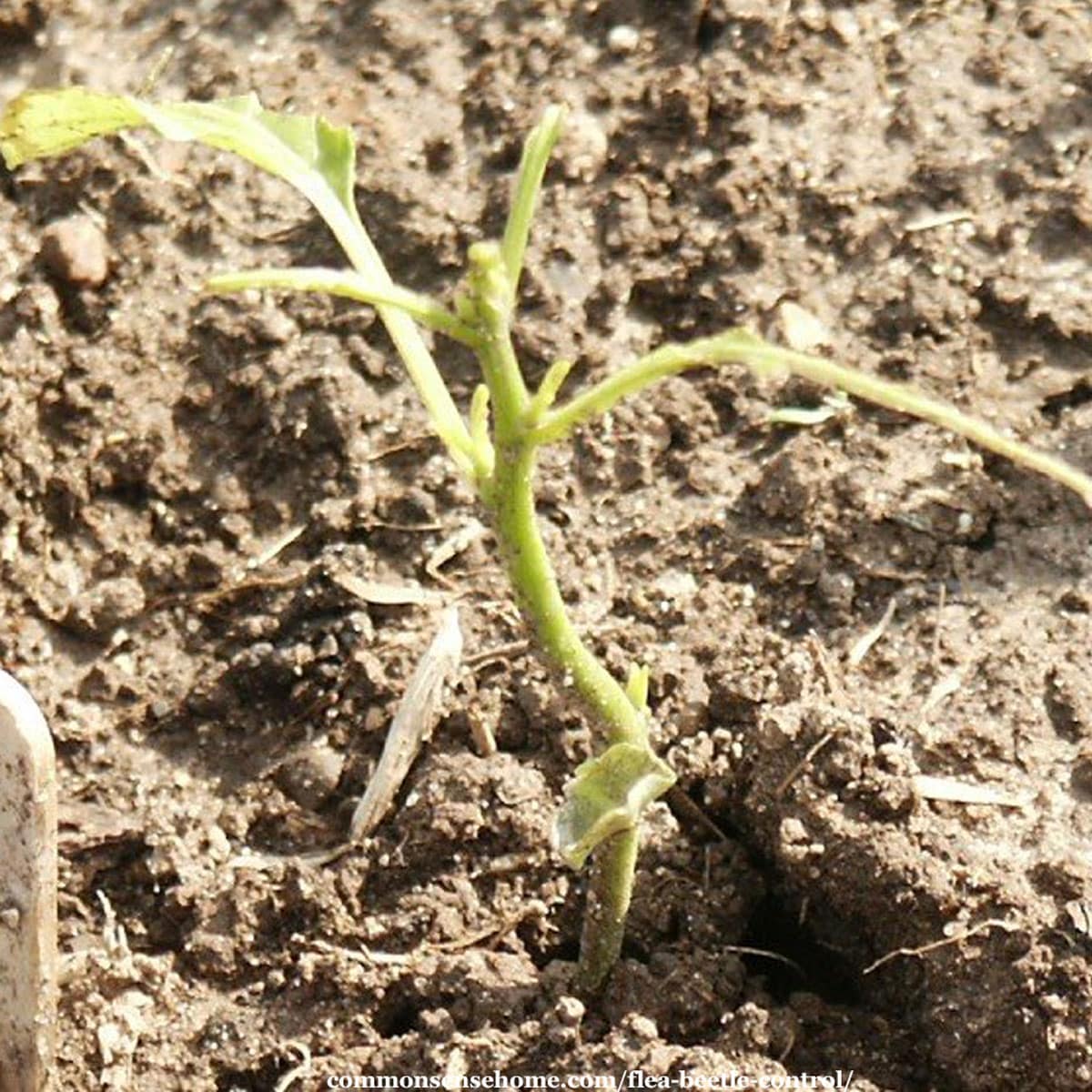
This is two days damage to a young pepper plant. It went from being a healthy, happy little seedling to a skeleton. I thought it was beyond hope, but thankfully, I was wrong.
Finding the tiny adult flea beetles on host plants is the most obvious sign of infestation. Watch for tiny, hopping bugs. Plants will have yellowing, or faded or splotchy leaves, in addition to the holes in the leaves.
Adults cause the most damage by chewing irregular rounded holes or pock marks in the leaves. The larvae usually cause little or no damage.
Flea beetles usually don’t cause fatal damage to established plants, because the leaves are already large enough to survive a few holes. The real danger is that the beetles can spread bacterial diseases from plant to plant.
In leafy crops like lettuce or spinach, the holes make the leaves look less appetizing. For home use, this isn’t a big problem unless you have fussy eaters. Insect chewed leaves may even be more nutritious. For market gardeners, the damage can make produce tougher to sell.
Flea Beetle Control
You can control flea beetle populations with spot treatments or cultural controls. My favorite defense is a good offense.
When my seedlings are strong and healthy, damage is usually minor. There are a few holes in leaves, but the plants keep growing and I can ignore the beetles.
If plants are stressed or off to a slow start from bad weather or poor soil, then I have more trouble. When our gardens were new, I had a lot more damage. Now that our garden is well established, I haven’t had to treat them in years.
Spot Treatments
Diatomaceous earth (DE) will kill the larvae and adult beetles. Sprinkle the diatomaceous earth directly on the flea beetles and/or around infested plants. The powder cuts through their soft underbelly and dries them out.
Talcum powder is used the same way. Be careful not to inhale the dust from DE or talcum powder, as it is bad for your lungs. Both will need to reapplied after a rain.
Would you like to save this?
Coffee Grounds for Flea Beetles
A saved my poor pepper plants with coffee grounds. I like using coffee grounds for flea beetle control because they are cheap and easy to apply. I don’t have to worry about breathing the dust, and they keep working even when it rains.
Save your coffee grounds if you’re a coffee drinker, or ask friends or your local coffee shop to save them for you.
You can apply coffee grounds to the plant and soil when you see damage, or spread the grounds around seedlings to help prevent flea beetle damage. I sprinkled coffee grounds on and around the plants, and added crushed eggshells for slug control, too.
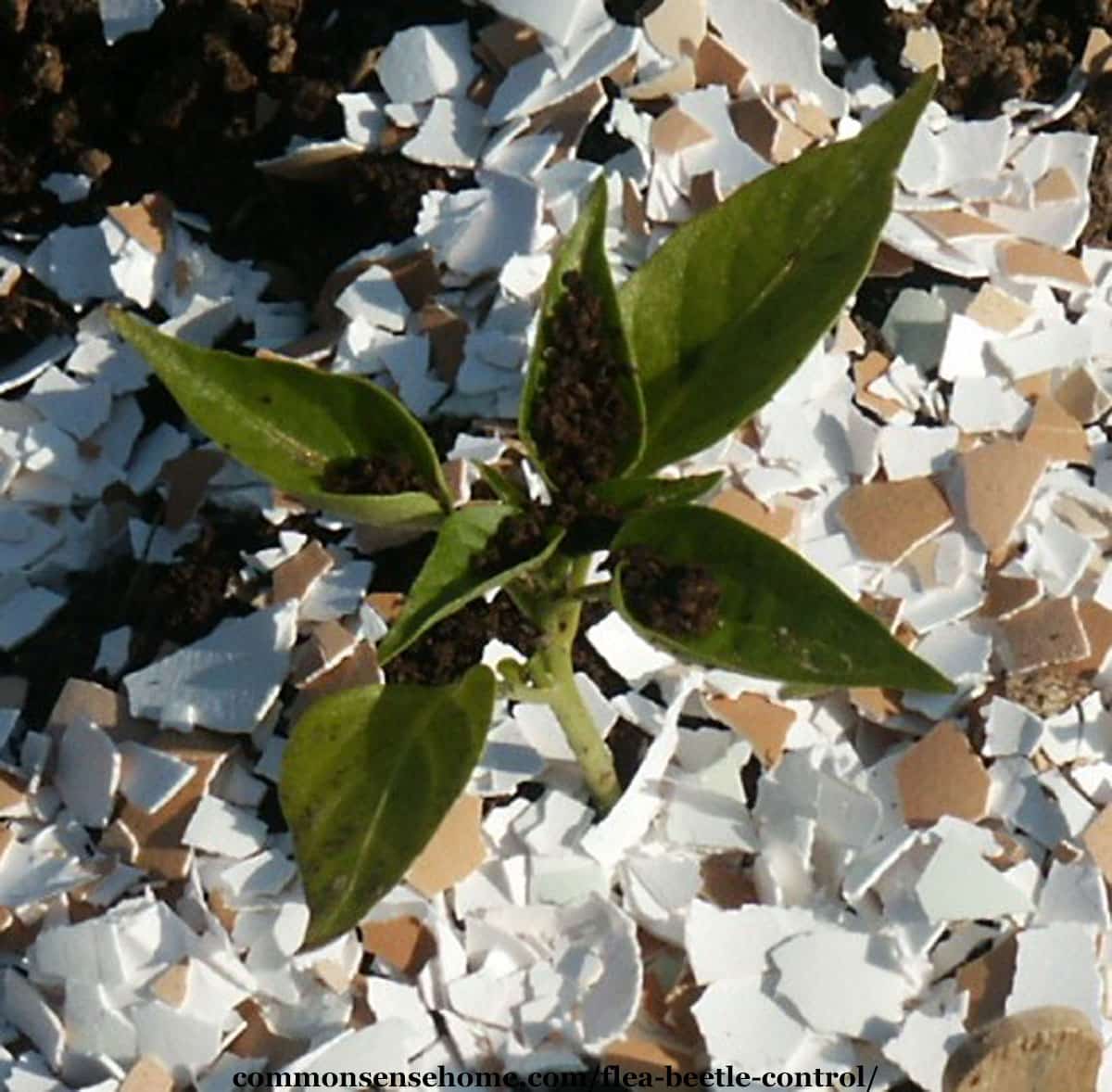
Sprays That Get Rid of Flea Beetles
Mix together 5 cups of water, 2 cups isopropyl alcohol, and 1 tablespoon liquid soap to spray bottle and spray affected plants. Spray some on ONE PLANT to test in case it damages the plant. (Some have found success with just soapy water.)
Neem oil sprays will also reduce flea beetle numbers. (Neem oil is sticky and musty smelling, so I much prefer coffee grounds.)
Cultural Controls
Some folks recommend floating row covers to reduce flea beetle damage. If the beetles or larva are already in the soil before you cover it, this won’t do much good.
Tilling in the fall can disturb or kill the adults underground, but it’s best to follow with a cover crop so the soil isn’t left bare all winter.
You can attract flea beetles using radishes as a “trap crop”. A trap crop lures in the beetles, hopefully protecting other plants. When the radishes are loaded with beetles, treat them with coffee grounds or the soap spray to kill the beetles.
Beneficial Insects that Provide Flea Beetle Control
Ladybugs, braconid wasps, tachinid flies and nematodes are natural predators of flea beetles and other insect pests. Plants mint or catnip, sage, hyssop, basil or nasturtium to attract these helpers.
See “Attracting Beneficial Insects to Help Your Garden Thrive” for more information.
Do flea beetles bite?
No, flea beetles don’t bite humans, they only eat plants. They are not related to the fleas that live on pets.
If you have biting fleas, please see “How to Get Rid of Fleas (Non-Toxic, Pet Safe Options)“.
Healing Damaged Plants
In most cases, the leaf damage from flea beetles won’t heal, but strong plants will bounce back with new growth.
Try side dressing plants with compost, or foliar feeding with fish emulsion, compost tea or worm tea. Anything you can do to reduce stress on your plants and encourage healthy growth will help them recover from the damage.
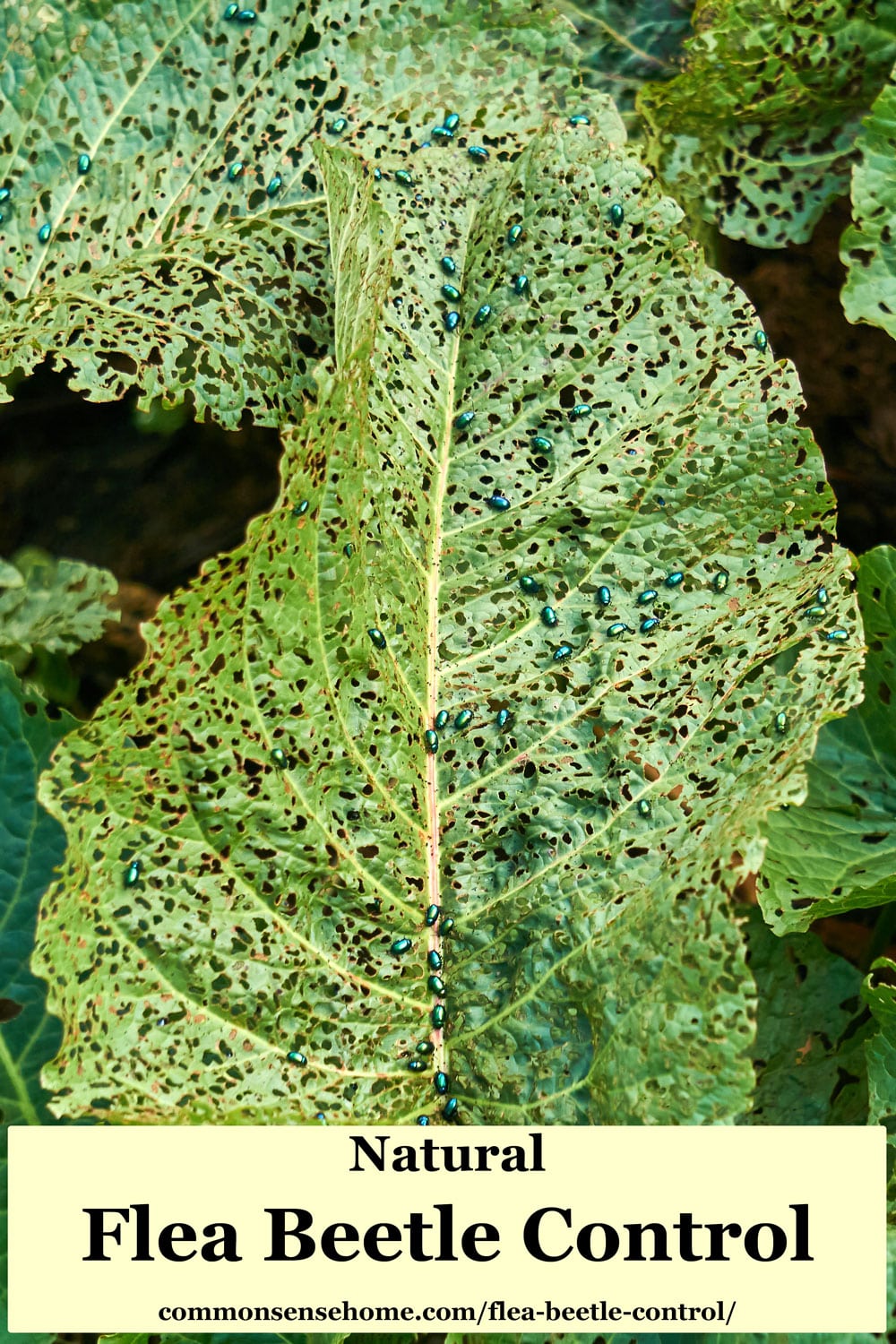

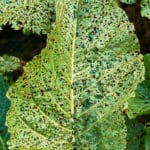
Yes very good information thank you .
What an absolutely wonderful article! Thank you for this. I did encounter these in my garden one time on my Raspberry leaves. I’ll keep an eye out for further damage they might pose and get a good DE dusting done.